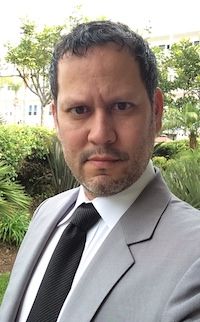ODYSSEY OUTCOMES: Results and Cost-Effectiveness
Jay Edelberg, MD, PhD, of Sanofi and Robert Sanchez, PhD, of Regeneron shared about the recent ODYSSEY OUTCOMES trial of alirocumab (Praluent) and accompanying cost-effectiveness study.

Jay Edelberg, MD, PhD
Results of the ODYSSEY OUTCOMES trial of alirocumab (Praluent) were recently published, and the cost-effectiveness analysis data was presented at the American Heart Association (AHA) Scientific Sessions 2018 in Chicago, IL.
Alirocumab was developed by Regeneron and Sanofi and received US Food and Drug Administration (FDA) approval in 2015. The PCSK9 inhibitor is approved as a second line treatment in addition to diet and statin therapy in adults with hereditary hypercholesterolemia or with atherosclerotic cardiovascular disease who require further lowering of LDL cholesterol.
While at the Scientific Sessions, MD Magazine® sat down with Jay Edelberg, MD, PhD, head of cardiovascular development at Sanofi and an author on the ODYSSEY OUTCOMES trial, and Robert Sanchez, PhD, senior director of health economics and outcomes research at Regeneron and an author on the ODYSSEY OUTCOMES Economics Study, to discuss both studies.
MD Magazine®: Dr. Edelberg, would you give us a brief overview of the ODYSSEY OUTCOMES trial?
Jay Edelberg, MD, PhD: Well ODYSSEY OUTCOMES was the cardiovascular outcomes trial with Praluent, alirocumab, in patients who were at very high risk for a recurrent event—patients with acute coronary syndrome within the past year, who despite maximum tolerated doses of statin, still had LDL cholesterol above 70 mg/dL were enrolled in the trial. The trial was designed to maintain patients' LDL-C levels between 25-50 mg/dL, using 2 different doses of Praluent—75 mg and 150 mg. Praluent-treated patients started the trial on 75 mg every 2 weeks and switched to 150 mg every 2 weeks if their LDL-C levels remained above 50 mg/dL.

Robert Sanchez, PhD
MD Mag: Dr. Sanchez, would you share a bit about the ODYSSEY OUTCOMES Economics Study?
Robert Sanchez, PhD: What the cost-effectiveness analysis showed was that in a patient population which experienced a significant decrease in mortality, as we showed in ODYSSEY OUTCOMES, the cost-effective price, at the $100,000 willingness to pay threshold, was approximately $6300. However, if you limited that to a patient population that had an LDL-C value of greater than 100 mg at baseline, the cost-effective price increases dramatically to about $13,500.
We’re really excited about the results and we’re working with the ACC [American College of Cardiology] and AHA to see how we can incorporate that into the next iteration of the [cholesterol] guidelines.
MD Mag: What did you see in those patients with high LDL cholesterol?
Edelberg: In ODYSSEY OUTCOMES, we saw that was an overall benefit for patients. Now, patients with baseline LDL above 100 had an even greater benefit—we saw a greater benefit in the overall reduction in major adverse cardiovascular events, and close to a 30% reduction in all forms of mortality.
I know this was incorporated into the pharmacoeconomic model—
Sanchez: Yes, it was, so as a result of that, what our study demonstrated was that in the patients who demonstrated the greatest benefit—those that had LDL-C values greater than 100—we demonstrated greater value.
MD Mag: What were some limitations that providers should keep in mind in interpreting these results?
Sanchez: One of the assumptions we made in the model was that we used all-cause mortality to model the results. And because all-cause mortality broke the hierarchy in the statistical analysis plan, that result is considered nominally significant. With that said, though, when you do cost-effectiveness analysis, you do not have a significant value in order to incorporate the data into the model. So, I think we incorporated the right endpoint into the analysis to demonstrate the value of alirocumab.
MD Mag: Are there any ongoing trials of alirocumab?
Edelberg: There’s still more work ongoing right now as we continue looking at all aspects of this, so this is just the beginning of the story for Praluent. There are ongoing trials right now including pediatric patients and other studies as well. So, like I said, the outlook for Praluent, we think, is very positive—for Praluent and more importantly for our patients.
Sanchez: And their families!